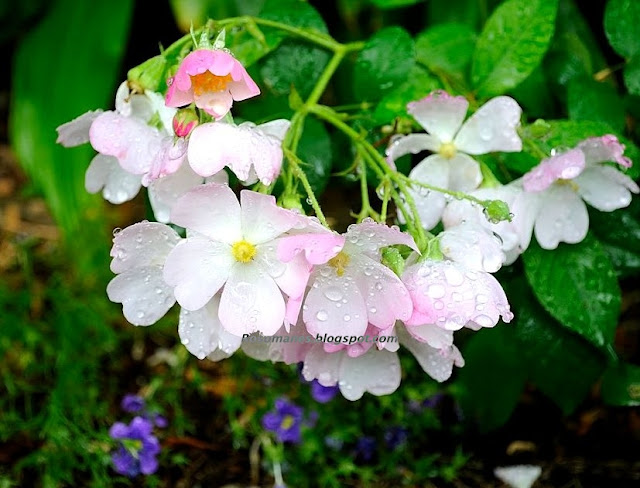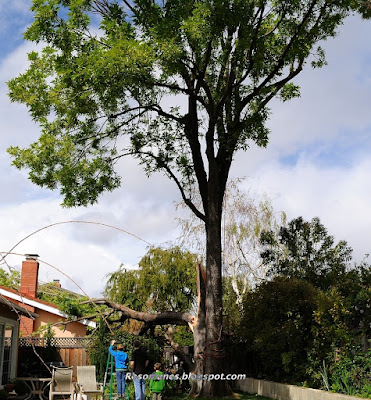
Even though roses are by far the dominant shrub I grow, I appreciate other flowering shrubs. I especially like seeing a progression of blooms throughout the year. I have therefore planted a few shrubs which bloom well before the roses and add a lot of early spring interest to the garden. They break up what would otherwise be rather monotonous borders, and provide contrasting foliage and (most of them) an evergreen screen in winter - an important consideration for my suburban garden.
My evergreen azaleas are the first to start blooming at the end of February.
Even though they put on a good show in spring, azaleas are not really well suited to our climate, tending to suffer from chlorosis in our alkaline soil and losing leaves to our dry summer heat.
My five plants require acidifying soil amendments and a lot of water. After roses, they are probably the highest maintenance plants in my garden.
Every summer I wonder whether I should rip them out, and every spring I think perhaps I will keep them for awhile.
My next early-blooming shrub is a double bridal wreath spirea (spiraea cantoniensis Flore Pleno), another shrub I seem to either love or hate. It is stunning just before peak bloom when fluffy white pom-poms are interspersed with tiny dots of buds.
In full bloom, the bush seems to be dripping with snow, and the thin canes bend under the weight of the flower clusters.
The rest of the year, however, it is not pretty. It is lanky and spreading, and while at home in a big informal woodland garden, is hard to fit into my small yard. Cutting back results in lots of naked growth on the lower stems and is not good-looking either. Add to that aphid infestations and burned leaf tips, and by the end of summer it is really not an asset to the garden anymore. But it is easily my favorite garden plant when in bloom and I will not get rid of the two I grow.

The last plant on my list is Chinese Fringe Flower, loropetalum chinense. Most garden varieties have either pink or purple blooms with greenish to purple foliage and one looks much like another.
I also grow the species, which is my favorite because of the subtle contrast between white flowers and lime-green foliage.
I like the tiny buds which look like fists that gradually open up their narrow twisted petals, four to a flower.
This plant is handsome year-round, unaggressive, shapely, very tolerant of pruning and wonderful in bloom.
These three shrub varieties help make early spring beautiful in my garden, creating a wonderful show just after winter-blooming camellias are done and before the glorious spring flush of the roses. When I see them in bloom, I know spring has finally arrived.










































